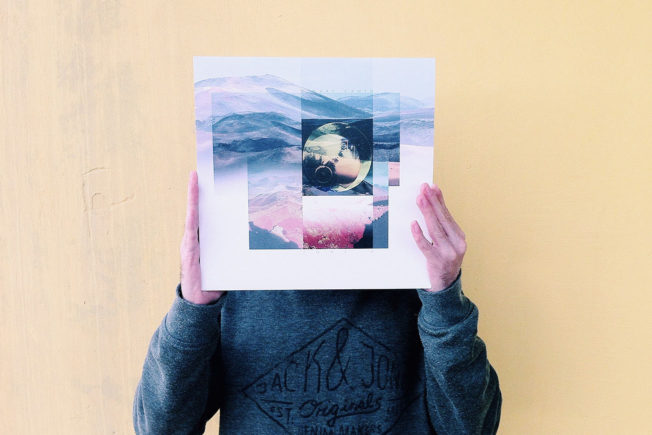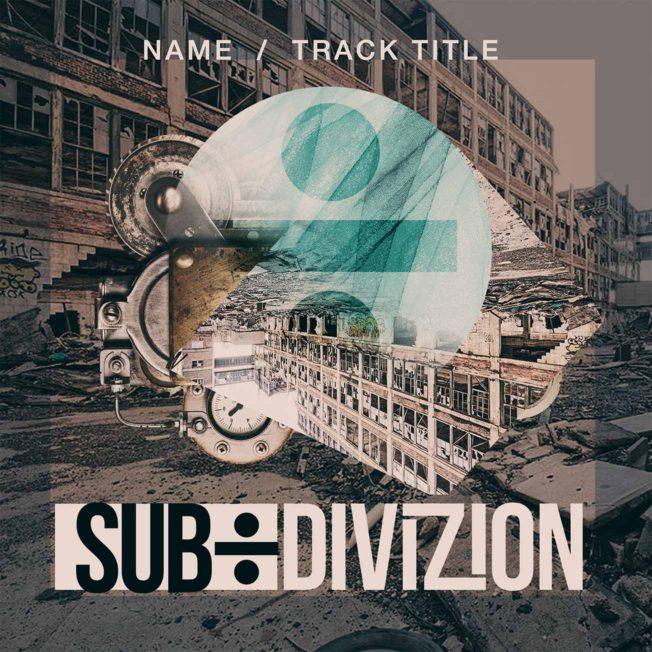Learn how to create stunning album cover art that will grab someone’s attention and get your music heard. This guide outlines cover art design best practices.

Why Album Cover Art is Important
Designing effective album cover artwork is crucial. Cover art is the visual gateway to your music. It’s also the image listeners will associate with your music.
First impressions are key to music discovery. Your album art will often grab someone’s attention before they listen to your music. Especially on digital music platforms. Potential fans are also more likely to listen to your music when your album artwork stands out.
Album cover art is also an essential part of music promotion and music distribution. The design you use to present your music is another way of branding yourself. It’s a reflection of your style as much as your music!
Album Cover Art Best Practices
Your album cover art should follow these specs to meet the requirements of most major music retailers and streaming services. Many music distributors will reject cover art that doesn’t meet these guidelines. These best practices also offer tips for creating quality album cover art.
[yuzo]
Music Distribution Guidelines
- A minimum size of 3000 x 3000 pixels (a perfect square).
- A minimum resolution of 72dpi (300dpi for best quality).
- JPEG file format (not all music retailers accept PNG or GIF).
- RGB color mode for best quality (CMYK may not show up correctly).
- Images must not be blurry, pixelated, misaligned, or have other quality issues.
- Only include text stating the artist name and release title. The copy should match your release info and metadata exactly. It’s also ok to use an image without text. Most music platforms display the artist and release info next to the cover art.
- Do not add text that says “Exclusive,” “Limited Edition,” “New Release,” the release date, or anything else that states a time frame. Keep your cover art timeless.
- Cover art must not contain URLs, logos, or any reference to a Digital Service Provider, record label, website, or other brands.
- Do not include email addresses, social media logos, URLs, or any other contact information.
- Do not include references to pricing. For example, “Available for $1.99,” “Low Price,” or “For Promo Use.”
- Cover art must not reference the format as a physical or digital product. For example, CD, DVD, or Digital Exclusive.
- Cover art must not contain pornography or inappropriate images of any kind.
- Avoid UPC barcodes and ISRCs. The music retailer or distribution service will provide them. Also, if you re-release, those codes may change.
- Cover art must not reference content the release doesn’t include. For example, “included DVD” or “includes lyrics.”
- Cover art must not be misleading. For example, referencing an artist that does not perform on the release.
Cover Art Design Best Practices
- Your image should be unique to the release. Don’t use the same image for multiple releases unless the artist name or track/album name is different.
- Only use authorized images. Don’t use images that are copyright protected unless you get permission to use them. Also, make sure the images you purchase are cleared for commercial use.
- Avoid using art that doesn’t match the release or your brand. Use font, colors, and imagery that represents your music and brand identity.
- Design your cover art for one-inch size. Most music retailers and streaming services display small thumbnails. So, ensure your cover art still looks great and easy to see when it’s size is reduced.
- Keep contrast in mind. Don’t add text on top of a busy background. It makes it harder to see, especially on thumbnail images. Also, consider a font color that’s easy to see against a background.
- Use a font that is easy to read. Unique and artistic fonts are fun, but they will be difficult to read.
- Don’t mislead people on a tribute album. Avoid making the name of the original artist larger than the performing artist. And don’t use the original artists’ photo unless you have permission.
- Last, sometimes a little goes a long way. Minimal looking cover art is a trend in the electronic music scene.
Designing Album Cover Art

Most musicians don’t have the time or skill to create the perfect album cover art. Here are some cover art design ideas for those tight on time and cash, lack design skills, or are looking for inspiration.
Free Stock Photo Websites
Some websites provide royalty free images you can download and edit to make album artwork. Sites such as Pexels, Unsplash, and Pixabay offer an extensive collection of free stock photos.
Photo Editing Websites
Online photo editing websites provide all the tools to create stunning album cover art. Many are also free! Check out sites such as Canva, Pixlr, GIMP, and Adobe Spark.
Album Cover Art Design Services
Many design services provide affordable album cover art. Some also offer a community of freelance designers to hire. Check out websites such as 99designs, Fiverr, Cover Art Factory, Cover Art Works, and Melody Nest.
Look to Other Artists for Inspiration
If you’re struggling to come up with a new album cover art idea, find inspiration in other people’s work. Look at cover art used by artists you admire or make the same music as you. See how you can use their ideas to fit your style.
Conclusion
Creating eye-catching album cover art is a vital part of releasing music, gaining fans, reaching new audiences, and advancing your music career. These general guidelines will ensure your cover art meets the requirements of major music retailers and streaming services. They will also help you create effective art that will grab someone’s attention and get your music heard!